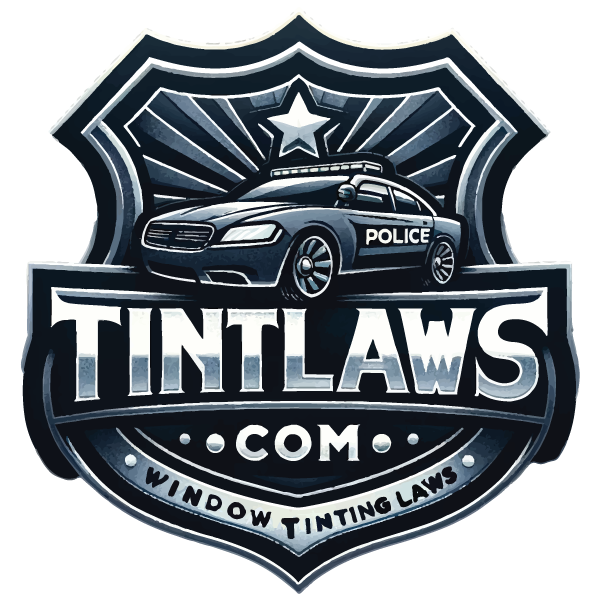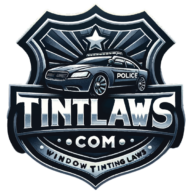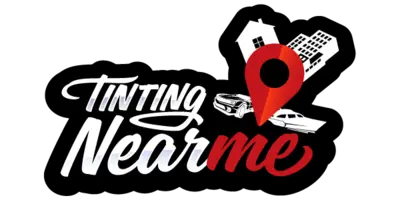2024 Utah Legal Tint Laws Explained
Imagine cruising down Utah’s scenic highways as the breathtaking sunset paints the sky in hues of gold and orange. You’re comfortably cocooned in your car, shielded by tinted windows that keep the glare at bay. However, did you know that the degree of this comfortable darkness is regulated by law? The 2024 Utah Legal Tint Laws have undergone significant changes, particularly in terms of allowed tint darkness and reflectivity. Understanding these laws can save you from unexpected fines and penalties. So, let’s peel back the layers of these regulations and explore what they mean for you as a Utah driver.
The information on tintlaws.com isn’t legal advice; consider it a starting point. Always verify with local and state authorities, as the final decision rests with you. We are not lawyers. For specific legal guidance, we can refer you to legal experts. Remember, knowledge of both state and local laws is essential, and even law enforcement might not be fully updated. We aim for accuracy but advise double-checking for the latest regulations.
Key Takeaways
Key Takeaways
Key Takeaways
- Utah tint darkness laws allow non-reflective tinting above the AS-1 line or top 4 inches of the windshield, while front side windows must allow more than 43% of light in.
- Back side windows in Utah can have any tint darkness, including full blackout privacy tint, while rear windows can have any darkness as long as it is not reflective.
- Reflective tint is not permitted on any vehicle in Utah, and metallic or mirrored appearances are not allowed on front and back side windows.
- Exceptions to Utah tinting laws include medical exemptions with proper documentation, the requirement of dual side mirrors if tinting back windows, and no need for film manufacturers to certify their tint film.
Understanding Utah Tint Darkness
Let’s dive into the specifics of Utah’s tint darkness laws, starting with the fact that the windshield tint must be non-reflective and is only permissible above the AS-1 line or top 4 inches. This rule is part of the broader Utah tinting rules that govern how auto window tint is applied and maintained in the state.
Delving deeper into the Utah window tint laws, you’ll find that the front side windows must allow more than 43% of light in. This is how tint darkness is measured, it’s all about the amount of light allowed to pass through the window tint in Utah.
Moving on to the back side windows, the rules and regulations allow for any tint darkness, including full blackout privacy tint. This flexibility can provide you with more privacy and protection from the sun. However, keep in mind that the tint should not interfere with your visibility while driving.
Similar rules apply to the rear windows. You can have tint of any darkness, as long as it is not reflective. This is part of the car window tint laws designed to prevent potential hazards caused by glare from reflective tints.
To ensure compliance with the 2024 Utah legal tint laws, Utah police use handheld devices to check tint darkness. This is why understanding Utah tint darkness is crucial. Non-compliance could lead to penalties, so it’s important to stay informed and updated on these regulations.
Navigating these rules may seem complex, but with a clear understanding, you can easily comply with the laws while enjoying the benefits of window tinting.
Reflectivity Regulations in Utah
While you’re getting a handle on tint darkness, it’s also crucial to understand Utah’s regulations around tint reflectivity. Reflectivity, or how reflective your window can be, plays a significant part in Utah’s window tinting laws. These laws are tailored to ensure optimal driving safety and protect against harmful UV rays.
Utah’s laws on reflectivity are unequivocal – reflective tint is not permitted. This regulation applies to all vehicle types: cars, trucks, SUVs, and others. The goal is to prevent any metallic or mirrored appearance that could distract drivers or hinder visibility.
Reflectivity regulations in Utah include:
- A strict prohibition of reflective tint on all vehicles
- The front side windows of your vehicle must not have any metallic or mirrored appearance
- The same rule applies to the back side windows
- The overarching objective is to enhance comfort and safety by ensuring clear visibility and minimizing distractions
These laws are comprehensive and designed to balance privacy, comfort, and safety considerations. Utah’s legal framework around window tinting, including both window tint darkness and reflectivity, is designed with the safety of drivers and pedestrians in mind.
Understanding Utah’s window tinting laws, particularly the tint reflection regulations, is essential for any vehicle owner in the state. It’s not just about complying with legal standards but also about ensuring a safe and comfortable driving experience. Remember, when it comes to tinting in Utah, it’s not just about how dark your tint can be, but also how reflective your window can be.
Additional Tinting Rules
Diving deeper into Utah’s tinting regulations, you’ll find that non-reflective tint is permissible above the AS-1 line or top 4 inches on windshields, contributing to both your vehicle’s aesthetics and protection against harmful sun rays. Utah’s tint laws were enacted to ensure road safety and visual clarity for both drivers and the Utah Highway Patrol.
In terms of the Light Transmission percentage (VLT%), front side windows must allow more than 35% of light in. On the other hand, side windows and rear windows can have any darkness, providing you with more options to choose from. However, remember that mirrored or metallic appearances on front and back side windows are not allowed under the 2024 Utah legal tint laws explained.
Manufacturers are not required to certify the tint’s VLT%, but it will be your responsibility to ensure your vehicle meets the legal requirements. Additionally, law enforcement, especially the Utah highway patrol, has the authority to use tint meters to identify legal tinting on your vehicle.
A table summarizing the additional tinting rules is provided below:
Tinting Area | Light Transmission (VLT%) | Additional Rules |
Front Side Windows | >35% | No mirrored/metallic tint |
Windshield | Top 4 inches/above AS-1 line | Non-reflective tint only |
Side Windows & Rear Windows | Any darkness | No mirrored/metallic tint |
Dual Side Mirrors | Required if back window is tinted | N/A |
Manufacturer’s Certification | Not Required | Compliance is owner’s responsibility |
Exceptions to Tinting Laws
In the realm of Utah’s tinting laws, there are a few notable exceptions that you should be aware of to ensure full compliance. As dictated by the 2024 Utah legal tint laws explained, not all rules are rigid, and exceptions to tinting laws exist.
Firstly, medical exemptions are recognized by law. If you have a medical condition that requires additional tint, you can darken the car windows with a doctor’s recommendation and a Utah Highway Patrol exemption letter. This exception, however, doesn’t automatically exempt you from a traffic stop. Law enforcement officers may still stop you to check on the validity of your medical exemption.
Secondly, there’s an exception for vehicle windows behind the front row. If any windows here have tint, your car must have dual side mirrors. This rule ensures that you maintain visibility, even with darker windows.
Thirdly, Utah’s tint laws don’t require film manufacturers to certify the film they sell within the state. This means that there’s no need to check for a manufacturer’s AS-1 line on your tint.
Lastly, no sticker is needed to identify legal tinting. But remember, certain colors are off-limits. Emergency light colors, such as red, blue, or yellow, are not permitted.
Here’s a quick recap:
- Medical exemptions allowed with proper documentation
- Dual side mirrors required if tinting back windows
- No need for film manufacturers to certify their tint film
- No sticker requirement, but color restrictions apply
Penalties for Non-Adherence
Flouting Utah’s tint laws isn’t a light matter – you’re looking at potential fines, points on your driver’s license, and even mandatory traffic school. If you choose not to adhere to these rules, penalties for non-adherence will be enforced, and ignorance of the law will not excuse you from them.
The 2024 Utah legal tint laws explained that any window film darker than what is allowed by law can lead to penalties. Even if manufacturers produce and sell darker tint films, you’re still responsible for ensuring you meet the required visible light transmission levels for your car windows.
For a first conviction, you’ll face a fine. The exact amount might vary, but rest assured, it’s an expense you’d rather avoid. If you’re convicted again, the fine increases, making non-compliance an expensive habit.
But the financial hit isn’t the only risk. Points may also be added to your driver’s license, bringing you closer to a suspension. In some cases, you might even be required to attend traffic school. This not only takes up your time but also incurs additional costs.
Moreover, you’ll likely be ordered to remove the non-conforming tint from your windows, another inconvenience that also comes out of your pocket.
Adhering to the allowed visible light transmission isn’t merely about avoiding penalties; it’s about ensuring safety on the road. Remember, these laws exist for a reason – to keep you and other road users safe. So, before you decide to darken your car windows, understand the rules and the consequences of breaking them.

How to Get Medical Exemption For Window Tint in Utah
Discover MyEyeRx.net, a company that streamlines the process of obtaining a medical exemption for window tint online. Explore their services to easily transform your window tint from non-compliant to legally approved!
Because of the differences in each of the 50 states, we’ve crafted distinct guides for securing window tint medical exemptions across all 50 states.

Toriano (Tory) Dewberry
Become one of the many satisfied clients Toriano has assisted in obtaining a medical exemption without stepping out of their homes. Click the button below to begin and discover if you're eligible for a medical exemption.

Toriano (Tory) Dewberry
Become one of the many satisfied clients Toriano has assisted in obtaining a medical exemption without stepping out of their homes. Click the button below to begin and discover if you're eligible for a medical exemption.
Frequently Asked Questions (FAQ'S)
What Is the Darkest Legal Tint in Utah?
In Utah, the darkest legal tint you’re allowed on your front side windows must let in over 43% of light. This tint regulation balances UV protection, privacy aspects, visibility concerns, and law enforcement’s need to see inside. It’s a safety measure ensuring tint durability doesn’t compromise your view. When installing, be mindful of legal implications. Also, remember that proper tint maintenance is crucial, and dual side mirrors are required if you tint any rear windows.
Can You Be Pulled Over for Window Tint in Utah?
Yes, you can be pulled over for window tint in Utah. Law enforcement has discretion to stop you if they believe your tint violates car modification laws. Tinted windows safety is a concern, and tint violation penalties can be imposed. Despite UV protection benefits, privacy doesn’t trump legality. Ticketing frequency varies, but you could consider legal tint alternatives. Understanding the tinting process is key to avoid issues.
What Is the Darkest Legal Tint for a Car?
In Utah, you’re allowed to have a tint on your car’s front side windows that lets in more than 43% of light. Any darkness of tint is permissible for rear and back side windows. Tinting can offer benefits like UV protection, but remember, it’s essential to follow regional regulations to avoid fines. Always consider safety and use professional services for tint installation and removal to maintain the material properly.
How Dark Is 35 Window Tint?
35 window tint is moderately dark, allowing only 35% of light through. It’s great for UV protection and privacy, but consider safety and window clarity. Different film types can influence tint longevity. Tint installation and removal are key factors, and tint percentages are crucial for legal reasons. However, the benefits of tinting can’t be understated. So, even though it’s dark, it’s still a popular choice.

Tint Laws Team
Ensuring your tint is not just about style, but legality and safety.
Let us guide you through the maze of state regulations to legal clarity.

Conclusion
Like a reliable shield, Utah’s 2024 tint laws offer you added protection, ensuring your safety and comfort while driving. Remember, adhering to these laws isn’t just a requirement, it’s a smart move that keeps you in good graces with the law. Should you choose to ignore them, you’ll face penalties as harsh as a summer sunburn. Stay informed, stay compliant, and enjoy the benefits of a legally tinted vehicle under Utah’s clear, comprehensive tinting regulations.
Looking to find a Reputable Window Tint Company In Utah?
Checkout Tintingnearme.com to Find A Local Tint Shop
After learning about window tint laws, the next step is to find a trusted local window tinting shop. Our directory at Tinting Near Me offers a selection of reputable shops knowledgeable in both quality tinting and legal standards, including medical exemptions.
Choose a shop from our list for expert service that meets legal requirements and enhances your vehicle’s compliance and protection.



